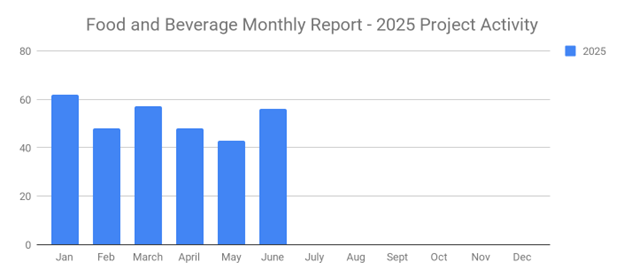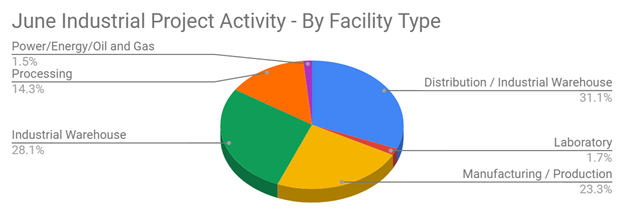
Mastering the Material Handling Sales Cycle
Generating a sale in the material handling industry often requires persistence. It can take more than half a dozen communications between a sales rep and a prospect to close a deal. Unlike consumer buyers, plant and facility managers approach purchasing decisions with caution, carefully evaluating whether products or services will provide real value to their operations. If you fail to effectively communicate the benefits of your offerings, prospects are unlikely to move forward. Success in material handling sales begins with understanding the stages of the B2B sales cycle. While every company’s approach may differ, most sales cycles share key foundational elements.
Lead Acquisition
The sales cycle begins with lead acquisition, where potential customers who express interest in your material handling solutions, such as forklifts, conveyors, or robotics, are identified. Generating leads involves leveraging various channels, including social media, email campaigns, direct mail, and online advertising. Prospects who share their contact information are added to your database, forming the foundation of your sales pipeline.
Maintaining a steady flow of high-quality leads is critical. Without new prospects entering the pipeline, sales will stagnate. Platforms like SalesLeads prospecting services provide an edge by identifying leads tied to active projects, such as facility relocations, expansions, or renovations. These project-specific insights enable your sales team to engage prospects with tailored and informed conversations, significantly improving the likelihood of conversion.
Lead Acquisition with an Identified Project
This type of lead isn’t generated through typical marketing channels, rather these leads have been developed with a project identified at the company. The projects can be a relocation, expansion or renovation at a facility or manufacturing plant, all of which are critical to material handling companies.
SalesLeads generates high quality leads with identified projects allowing you, the sales rep or marketer to immediately begin an intelligent dialog with the prospect as you’ve reviewed the notes SalesLeads’ researchers gathered on the project. Along with the identified projects, you’ll also receive the contact names, titles, email addresses and phone numbers to ensure various marketing touch points, and a way to ensure contact. This type of valuable content allows you, a material handling sales rep or marketer to quickly bring the opportunity further down the sales process, and further down the pipeline.
The best way to evaluate our services is to give it a try with a few complimentary project samples. They will be recent, so be ready to call.
Lead Qualification
Not all leads are created equal, making qualification a vital step in the sales process. This stage distinguishes between sales-qualified leads (SQLs) and marketing-qualified leads (MQLs). SQLs have demonstrated a strong intent to purchase and are ready for direct engagement by the sales team. MQLs, on the other hand, require additional nurturing before they are ready to transition further down the pipeline.
Research shows that only 27% of B2B leads are considered sales qualified. Leveraging tools like SalesLeads’ project insights allows your team to prioritize leads with the highest potential while avoiding wasted efforts on unqualified prospects. This strategic focus improves pipeline efficiency, optimizes resource allocation, and increases conversion rates.
Communication
Effective communication is the lifeblood of the sales cycle. Promptly reaching out to prospects after acquiring their contact information establishes a connection and sets the tone for the relationship. The faster you engage, the higher the chances of moving the prospect toward a sale. Delays can result in lost opportunities as prospects may turn to competitors.
During communication, focus on understanding the prospect’s specific needs and challenges. Whether they require material handling solutions like automated systems or industrial cranes, your goal should be to craft a personalized approach that resonates with their priorities.
Nurturing
Nurturing is the stage where trust is built, and the value of your offerings is demonstrated. The goal is to show prospects how your solutions can address their challenges and enhance their operations. Striking a balance is key; being overly aggressive can push prospects away. Studies reveal that while nearly half of industrial buyers feel sales reps are too pushy, only a small percentage of sales professionals recognize this perception.
Effective nurturing might include providing educational content, sharing success stories, or conducting demonstrations tailored to the prospect's needs. For example, showcasing how your conveyor systems streamlined production for a similar client can highlight the tangible benefits of your solutions.
According to HubSpot, roughly half of all industrial prospects say that material handling sales reps are too aggressive, while only 17% of sales reps think they are too aggressive. As a sales rep, you must balance a fine line between projecting the value of your product or service while still giving the prospect room to breathe.
Proposal
The proposal stage involves formalizing your pitch. A well-crafted proposal should address the prospect’s specific needs and outline how your products or services can meet their goals. For material handling companies, this might include detailed recommendations for forklifts, robotics, or production line integrations, along with cost-benefit analyses that support your value proposition.
Proposals grounded in project-specific insights are particularly effective. Leveraging data from SalesLeads ensures that your pitch aligns with the prospect’s objectives and timelines, enhancing its relevance and impact.
Closing the Deal
Closing the deal is the final step, where the prospect agrees to purchase your solution. This stage requires careful attention to detail. Errors in pricing, product specifications, or delivery terms can derail the agreement at the last moment. Ensuring alignment on all aspects of the deal helps secure the prospect’s confidence and commitment.
Maintaining open communication during this stage is essential. Address any lingering concerns, confirm timelines, and reaffirm the value of the solution to reinforce the buyer’s decision. Successful deal closures not only drive revenue but also lay the foundation for long-term customer relationships.
Statistics show that 80% of sales reps ignore the sales cycle. If you don't take advantage of the sales cycle, you'll probably experience fewer sales. So, make sure your material handling company has a structured, detailed sales cycle that allows you to nurture prospects through the process.
The Importance of a Structured Sales Cycle
A structured and consistent sales cycle is vital for success in the material handling industry. Statistics indicate that 80% of sales reps bypass critical stages of the sales process, resulting in missed opportunities and reduced performance. By adhering to a well-defined sales cycle, your company can ensure prospects are nurtured effectively, fostering trust and ultimately driving greater sales outcomes.
From lead acquisition to deal closure, every stage plays a crucial role in transforming prospects into satisfied customers. Embracing this process with a strategic approach ensures your material handling company remains competitive and successful in an ever-evolving market.
What to learn more? Get in Touch
Latest Posts
-

June's New Distribution and Supply Chain Planned Projects Return to March’s 183 Confirmed Figure
-

Food and Beverage Rebounds with 56 New Planned Projects Igniting Growth After Decline
-

June 2025’s New Industrial Construction Projects Grew 7% Month-Over-Month
-

Q2 Industrial Manufacturing Soars 31% for Planned Projects Over $100M; June Planned Industrial Projects Hit 141

